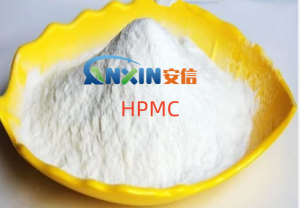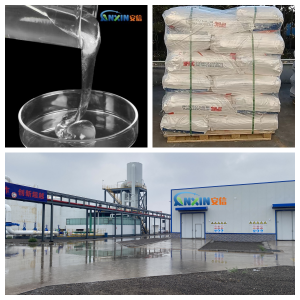Hydroxypropyl methylcellulose (HPMC) is a chemically modified nonionic cellulose ether. Its mechanism of action is primarily related to its unique molecular structure and physicochemical properties. HPMC is widely used in construction, pharmaceuticals, food, and daily chemicals. Its core functions include thickening, water retention, film formation, stabilization, bonding, and sustained release. These functions are achieved through the performance changes brought about by the hydroxypropyl and methoxy substituents on its molecular chain.
1. Molecular Structure and Hydrophilic-Hydrophobic Balance
HPMC is a modified product formed by introducing methoxy (–OCH₃) and hydroxypropoxy (–OCH₂CH(OH)CH₃) substituents onto the hydroxyl groups of natural cellulose. The methoxy group increases the hydrophobicity of the molecular chain, while the hydroxypropoxy group enhances its flexibility and hydrophilicity, enabling it to form hydrogen bonds with water molecules for solubility while also exhibiting certain hydrophobic interactions in solution. This hydrophilic-hydrophobic balance is the foundation of its multifunctionality.
2. Thickening and Rheology Control Mechanism
When HPMC is dissolved in water, its molecular chains become highly extended in the solution. This intermolecular entanglement increases the internal friction of the system, thereby increasing viscosity. Furthermore, HPMC exhibits pseudoplasticity (shear thinning) at varying shear rates, which facilitates a balance between fluidity and formability during application. For example, in building mortar, it provides a high viscosity at rest to prevent sagging, while the viscosity decreases during mixing or application, facilitating spreading.
3. Water Retention Mechanism
The hydroxyl and ether bonds on the HPMC molecular chains form a stable hydrogen bond network with water molecules, significantly reducing the rate of water migration within the system and thus retaining water. In cement mortar or gypsum systems, HPMC reduces the rapid absorption and evaporation of water from porous substrates or high-temperature environments, enabling more complete hydration reactions and improving adhesion and strength.
4. Film Formation and Adhesion Mechanism
During the evaporation process, the HPMC molecular chains approach each other, physically entangle, and partially interact with each other to form a continuous, transparent, and flexible film. This film-forming ability not only provides a smooth surface in coatings and tablet coatings but also improves interfacial adhesion in building materials.
5. Stabilization and Dispersion Mechanism
HPMC is a nonionic polymer that stabilizes suspended particles or emulsions through steric hindrance and solvation, preventing the aggregation and sedimentation of pigments, fillers, or oil droplets. In emulsion polymerization, coatings, and food systems, HPMC can significantly improve the storage stability of these systems.
6. Sustained and Controlled Release Mechanism
In pharmaceutical tablets, HPMC forms a gel layer on the tablet surface upon contact with water, restricting further water penetration and controlling the diffusion rate of the active ingredient. The thickness of the gel layer is related to the viscosity grade and degree of substitution, thereby achieving sustained or controlled release of the drug.
7. Thermosensitive Gelation Properties
HPMC aqueous solutions undergo reversible thermal gelation upon heating. This is due to the enhanced interactions of the hydrophobic groups on the molecule at high temperatures, repelling water molecules. This property can be used for heat-stabilized molding in certain food processing and pharmaceutical formulations.
The mechanism of action of hydroxypropyl methylcellulose (HPMC) stems essentially from the molecular structure of modified cellulose. Combining multiple physicochemical mechanisms, including hydrogen bonding, hydrophobic interactions, steric hindrance, and molecular chain entanglement, it simultaneously achieves thickening, water retention, film formation, stabilization, adhesion, and sustained release in diverse systems. This versatility and adjustability make HPMC an important functional additive across multiple industries.
Post time: Aug-13-2025








